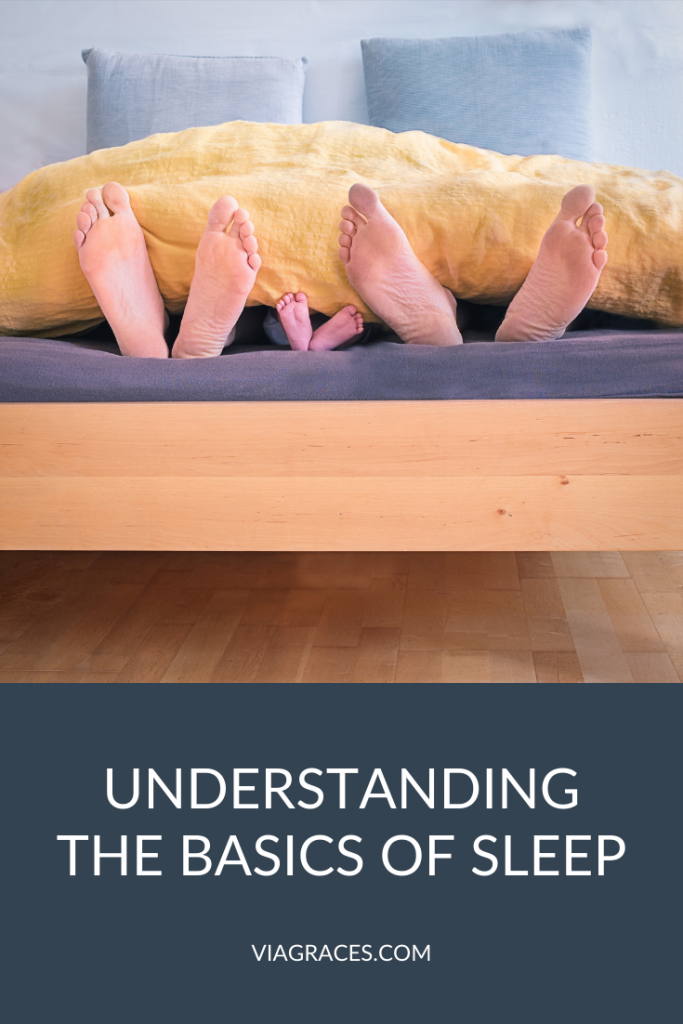Although I’m the one trained in all things sleep, when I start working with a family, it’s important that they have some understanding of what’s actually happening with their child’s sleep so they better understand the whys behind what we’re doing.
And this is a big piece of baby and child sleep that I did NOT understand when we were struggling with my eldest’s sleep as as baby, so here’s your crash course in both baby and adult sleep!

Newborns
Newborn sleep is different than adult sleep, because it’s underdeveloped. Newborns simply have two stages of sleep: REM (Rapid Eye Movement) and non-REM.
REM sleep is where you might see your newborn twitching, making faces, lifting her head off your chest and back down again; it’s active!
Non-REM sleep is that super deep sleep, where you can pick up your baby’s little arm and drop it, and she won’t budge! And newborns spend about 50% of their time sleeping in each stage.
Everyone Else
Around the four month mark, however, is when babies leave those two underdeveloped cycles behind and their sleep reorganizes into adult-like sleep cycles, now consisting of four stages:
Stage 1
This is the stage that is considered to be “drowsy.” Imagine yourself lying in bed, almost asleep, and your phone buzzes…you are aware you weren’t yet asleep, however you are still startled and are now feeling much more awake than before. That’s because your first stage of “sleep” was actually interrupted, and now you have to start all over again to get back there.
Stage 2
This is considered the first true sleep stage. If someone wakes you out of this stage, you are very aware that you were asleep, but it’s still pretty light.
Stage 3 (most similar to a newborn’s non-REM sleep)
This stage is where you get your deepest and most regenerative sleep; it’s your “slow wave” sleep. It’s critical for the reparation of your immune system and the continued growth and development of your body.
Stage 4 (most similar to a newborn’s REM sleep)
This stage is where your brain starts doing most of the work, consolidating memories and learned information from that day. This is also where most dreaming occurs.
Once we have gone through stages 1-4 of sleep (a sleep cycle!), we either have a small natural waking or come close to it before drifting into another sleep cycle until we wake for the day. For babies and children who depend on a prop to fall asleep, this is generally where they wake up and look for that same prop to get back to sleep, and we have to go help them (i.e. by feeding or rocking).
For independent sleepers, like you and me, we often don’t even remember that this waking occurred as we are just as quickly back to sleep. And this independence is the goal of the sleep plans I personalize for the families I work with!
So there you have it! Now that you understand you and your baby’s sleep, it makes the dreaded four month regression make so much sense!
With Grace,
Lauren
